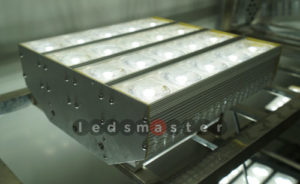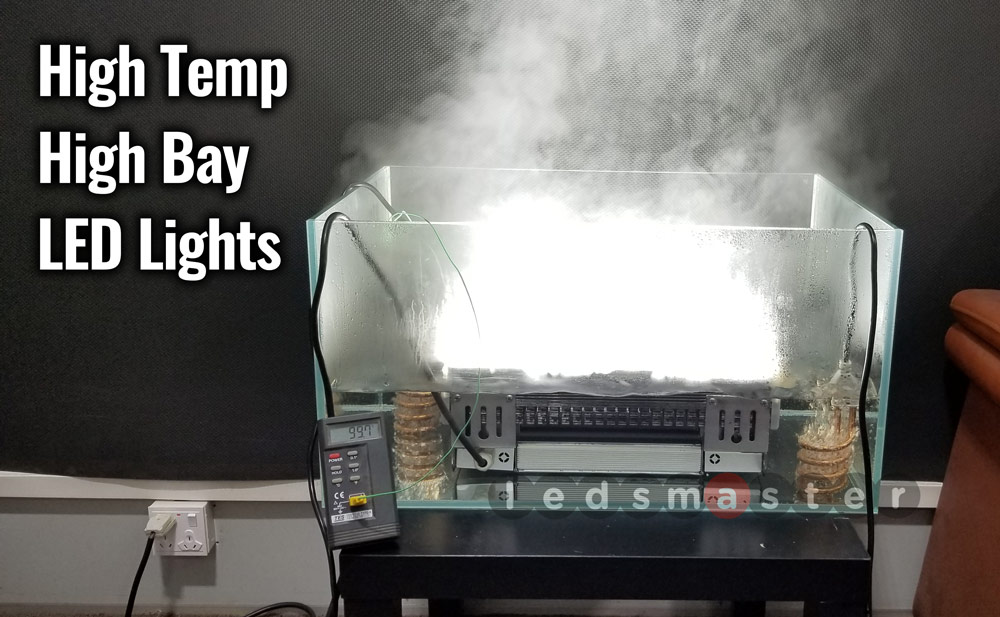The terminology surrounding various fixture types can often leave homeowners feeling puzzled, particularly when it comes to distinguishing between high bay and low bay lights. Making the wrong choice can indeed have a noticeable impact on your living space. While the consequences may not be catastrophic, they can certainly detract from the overall ambiance.
Understanding the disparity between these two lighting options and discerning when each should be employed is crucial for any homeowner. Let’s delve into the nuances of high bay versus low bay lights, exploring their purposes, similarities, and disparities.
Table of Contents
ToggleHigh Bay Lights: Illuminating Spacious Heights
 High bay lights, as the name suggests, are designed to illuminate areas with lofty ceilings. But what exactly constitutes a “high” ceiling? Typically, ceilings ranging from 20 to 45 feet fall into this category. Given the expanse of space to be illuminated in a high-ceiling environment, high bay lights are engineered to deliver potent illumination across large areas.
High bay lights, as the name suggests, are designed to illuminate areas with lofty ceilings. But what exactly constitutes a “high” ceiling? Typically, ceilings ranging from 20 to 45 feet fall into this category. Given the expanse of space to be illuminated in a high-ceiling environment, high bay lights are engineered to deliver potent illumination across large areas.
When it comes to selecting high bay lights, an array of fixtures is at your disposal. LED lights, fluorescent lights, high-pressure sodium, induction, and metal halide lights are among the common choices. Additionally, there’s a variety of lamp styles compatible with high bay lights, including linear high-bays, round fixtures, and grid-mount options. Your choice of high bay light will hinge on factors such as personal preference, room dimensions, and the nature of tasks to be performed beneath its glow.
Low Bay Lights: Illuminating Intimate Spaces
 On the other end of the spectrum, low bay lights cater to spaces with more modest ceiling heights, typically ranging from 12 to 20 feet above the floor. If you find yourself in need of low bay lighting, chances are your ceiling height falls below the 20-foot threshold. Low bay lights come in a diverse range of types, with some of the most prevalent options including compact fluorescent lights, troffer-styled fixtures, and the latest LED innovations.
On the other end of the spectrum, low bay lights cater to spaces with more modest ceiling heights, typically ranging from 12 to 20 feet above the floor. If you find yourself in need of low bay lighting, chances are your ceiling height falls below the 20-foot threshold. Low bay lights come in a diverse range of types, with some of the most prevalent options including compact fluorescent lights, troffer-styled fixtures, and the latest LED innovations.
Among the choices for low bay lights are standard and round fixtures, featuring either prismatic or aluminum reflectors, offering homeowners additional flexibility in design and functionality.
High Bay Lighting: When and Where to Illuminate the Heights
Determining when to utilize high bay lighting hinges primarily on the ceiling height of your space. Any ceiling exceeding 20 feet from the floor warrants the implementation of high bay lights. Failure to do so may result in inadequate illumination, particularly closer to the floor, leading to shadowy areas.
High bay lights find their niche in a variety of buildings characterized by lofty ceilings and expansive interiors. From workshops and assembly lines to airports and factories, these lights are adept at illuminating both horizontal expanses and vertical heights. Warehouses, large storage aisles, gyms, and recreational spaces also benefit from the powerful illumination provided by high bay lights. Tailoring the fixtures and placement to the specific demands of the space, such as illuminating aisles and corridors in warehouses, enhances the overall lighting efficacy.
Low Bay Lighting: Lighting Solutions for Lower Ceilings
Conversely, low bay lighting is best suited for spaces with lower ceiling heights, typically ranging from 10 to 20 feet. Utilizing smaller, less potent light sources, low bay lights are adept at providing ample illumination in confined spaces. Lens angles are employed to further disperse the light, directing it precisely where needed.
While low bay lights are suitable for outdoor use, they find myriad indoor applications as well. Household rooms, offices, hospitals, stations, small warehouses, garages, and shops all benefit from the targeted illumination offered by low bay lights. Any environment characterized by lower ceilings and requiring sufficient lighting is an ideal candidate for low bay lighting.
In environments with harsh conditions, such as high temperatures, high bay lights equipped to withstand such rigors are essential. These specialized luminaires feature protective designs and reinforcements tailored for challenging environments, ensuring reliable illumination even in adverse conditions.
Understanding High Bay Lighting Options
Diverse Selection of High Bay Fixtures
When setting up high bay lighting, you’re confronted with a plethora of options, each with its own distinct features and advantages. Among the most modern and sought-after choices are LED lights, renowned for their extended lifespan and exceptional energy efficiency. Induction lights, eschewing electrodes, also boast impressive longevity. Traditionalists may opt for metal-halide lights, particularly effective in high-intensity applications such as gym or athletic center illumination.
Considerations Beyond Light Type
Beyond the light source itself, high bay lighting offers a spectrum of shapes and colors to suit various preferences and spatial requirements. Whether it’s round, linear, or grid-mount high bays, homeowners have the flexibility to tailor their lighting choices to the specifics of their space and personal aesthetic.
Reflectors and Lens Angles: Enhancing Illumination Efficiency
To ensure uniform illumination throughout the space, high bay lights require specific reflectors or lens angles. The two primary options, prismatic and aluminum reflectors, each serve distinct purposes. Aluminum reflectors direct light straight to the floor, while prismatic reflectors diffuse light, ideal for illuminating elevated objects like shelves.
Exploring Low Bay Lighting Options
Versatile Selection of Low Bay Fixtures
Low bay lighting also presents a range of options catering to various needs. Modern LED low bay lights offer high performance coupled with energy efficiency, making them an attractive choice. Compact fluorescent lights, with their long-standing history in small space illumination, remain a reliable option for many.
Tailoring Lighting Solutions
Similar to high bay lights, customers can choose between standard and round low bays, each available with aluminum or prismatic reflectors and in an assortment of colors. Each type of reflector offers unique features and benefits, ensuring that lighting solutions can be tailored to suit specific requirements and preferences.
Mastering the Selection of High Bay and Low Bay Lighting
Selecting the ideal high bay and low bay lighting fixtures can significantly impact the lighting outcome of any space. Beyond merely choosing between these two major types based on ceiling height, homeowners must then pinpoint the specific subtype that best aligns with their building’s requirements. Given the distinct lighting needs of spaces like warehouses versus gyms or factories, several crucial factors must be considered to ensure optimal lighting selection.
Beam Angle: Illuminating the Space Efficiently
The beam angle plays a pivotal role in determining light spread and coverage. A narrow beam angle results in focused lighting, ideal for illuminating specific areas or platforms. Conversely, a wider beam angle ensures satisfactory light distribution across large open areas with lower ceilings. Commercial settings typically favor beam angles ranging from 40 to 90 degrees, while larger angles, reaching up to 120 or 150 degrees, are suitable for low-ceiling public spaces like gas stations or garages.
Fixture Shapes: Balancing Aesthetics and Functionality
Both high and low bay lights are available in a variety of fixture shapes, each offering unique aesthetic and functional benefits. Traditional pendant-style lights with reflectors, while aesthetically pleasing, may not be the most energy-efficient option. Modern alternatives like round high and low bays, often IP65-rated for durability, provide a compact and contemporary solution suitable for harsh industrial environments. Linear aisle lights are ideal for achieving uniform light distribution, commonly employed between warehouse racks to illuminate walkways.
Energy-Efficiency: Prioritizing Sustainability
Energy-saving considerations are paramount when selecting lighting options. While LED lights are renowned for their energy efficiency, newer-generation fluorescent lights can offer comparable performance with similar energy-saving benefits. Prioritizing energy efficiency not only reduces operational costs but also minimizes environmental impact.

Comparing High Bay and Low Bay Lights
Similarities in Application and Installation
Both high bay and low bay lights are specifically designed to illuminate large spaces, making them suitable for installation in warehouses, garages, factories, and residential properties alike. Additionally, both types are typically mounted at a high level using cords, pendants, or chains, and can be directly installed onto ceilings or ceiling girders.
Understanding Key Differences
Despite their shared applications and installation methods, high bay and low bay lights exhibit significant differences. The primary distinction lies in their intended room sizes, determined by the height between the floor and ceiling. High bay lights typically feature narrower beam angles (90 degrees or lower) and higher power outputs (often exceeding 150W), whereas low bay lights have wider beam angles (up to 150 degrees) and lower power ranges (typically between 60-100W). Technical disparities, such as lumen output, further differentiate the two types, with low bay lights requiring less lumen output due to lower light loss compared to high bay lights.
Understanding these differences is crucial for achieving optimal lighting outcomes, as selecting the appropriate type of lighting ensures effective illumination without issues like shadows or glares detracting from the overall lighting experience.

Conclusion
Selecting the optimal high bay and low bay lighting fixtures is essential for achieving effective illumination tailored to the specific requirements of each space. By considering factors such as beam angle, fixture shapes, and energy efficiency, homeowners can make informed decisions that enhance productivity, comfort, and visual appeal while minimizing energy consumption. Understanding the differences between high bay and low bay lights ensures that lighting solutions are tailored to address the unique needs of different environments, ultimately creating well-lit spaces that maximize functionality and ambiance.

